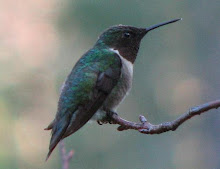
In post Katrina South Louisiana, the trends for 2009 lean towards edible gardens, vertical gardens,
rain gardens and native plants, to name a few. How land is used, especially in the cities and suburbs, is changing from useless decorative landscapes to useful and cost effective ones. Edible and native plants are replacing manicured exotic turf lawns and formal gardens.
The concept of vertical gardening is big, too. Innovative projects proposed for large cities include giant greenhouses with food plants growing vertically. Theoretically, a city (like New York for example) could organically grow all the produce needed for its population and it would be of better quality and cheaper because transporting it long distances would not be required. More basic vertical gardens can be incorporated into any landscaping plans as the article,
"Growing a Vertical Vegetable Garden" explains. Another benefit of vertical and sustainable gardening in cities and suburbs would be that many acres of worn out farm land could be returned to its native state. This would provide needed wildlife habitat and restore balance to the environment.
So as you look through the
seed catalogs this winter, be sure to include some easy to grow vegetables and herbs in your order. Also consider adding islands of multipurpose native trees and shrubs like Mayhaws (Crataegus), Crabapples (Malus) and wild Blueberries (Vaccinium).
There are several fabulous lenses in our
Naturally Native Squids Group that discuss this important subject so it was very hard to choose just one to feature. Since most of them discuss one aspect of
Sustainable Gardening, we have decided to feature one for each topic.
Organic GardeningOrganic Food Gardening by
Tigga gives the beginner a lot of good information about how to grow your own food, organically. There are many links to organic sites as well as books about the subject.
Growing Vegetables in Small SpacesGrowing tomatoes (and other stuff) by
dannystaple shows you that you can grow your own produce, even if you live in an apartment. Danny shows you, step by step, how to grow tomatoes that taste ten times better than those in the supermarket.
CompostingYou'll find a how-to on composting on
A Compost List of Over 200 Compost Ingredients by
TheresaMarkham. She gives many useful pointers and there is a long list of what materials can be composted that is very useful.
Natural Pest ControlPesticides: Don't Kill the Good Guys by
Stazjia details the chain reaction that the loss of insects can cause. Using natural forms of pest control will benefit everyone and everything in the long run.
Landscaping with Native PlantsWe had to include one of ours, since there was no other lens that covered the subject quite as thoroughly.
Gardening with Native Plants by
naturegirl7 shows, step by step, how to landscape using native plants and also discusses composting, organic pest control and gives a list of easy to grow native plants organized by the season of blooming or fruiting.
For more information about Green Living Gardening Trends visit some of these other great sites:
Beneficial InsectsSustainable GardeningBrooklyn Botanic Garden: Sustainable TopicsBasics of Sustainable Gardening - Do It YourselfAfter reading all of these informative, well written lenses and pages, we're sure that you will be ready to incorporate sustainable gardening into your landscape this spring. Happy gardening!





